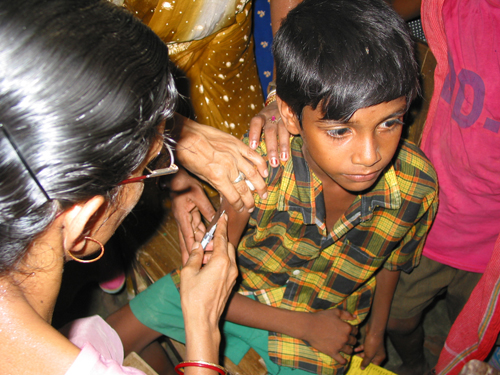
A boy in India is immunized against Japanese encephalitis during a 2006 campaign. (Photo courtesy of PATH)
Last month, the World Health Organization (WHO) gave a stamp of approval for a Chinese-made vaccine against Japanese encephalitis (JE), a disease that plagues mostly children in poor rural communities in Southeast Asia and the Western Pacific. Seattle’s PATH (Program for Appropriate Technology in Health) had been searching for ways to develop a low-cost vaccine for JE, which kills up to 30 percent of its victims and leaves thousands more with permanent brain injuries. WHO estimates the disease kills 10,000 to 15,000 people every year. There is no cure.
Previously, there had been a commonly used vaccine, but it had significant drawbacks — three doses were required and it was extremely time-consuming and expensive to produce. There wasn’t enough funding or vaccine for all the children who needed it. Then PATH learned of a safe, single-dose, affordable Chinese vaccine manufactured by Chengdu Institute of Biological Products (CDIBP). With a grant from the Bill and Melinda Gates Foundation, PATH collaborated with CDIBP, international partners and ministries of health in Asia to accelerate its introduction to the rest of the world.
The vaccine, called SA 14-14-2, has now been used on children in India, Nepal, Cambodia, Sri Lanka, and North Korea. It is the first vaccine ever produced in China to receive WHO prequalification, which creates an opportunity “for China to become a leader in creating great vaccines for the world,” Bill Gates wrote on the Gates Foundation blog.
The prequalification designation means that the vaccine has met WHO’s rigorous standards for quality, safety and efficacy, and is expected to increase demand and financing for the vaccine, driving down its cost further. (end)

